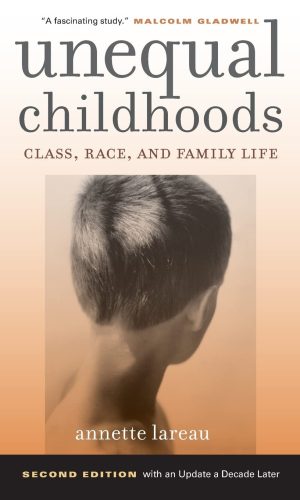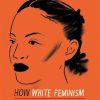White Tears Brown Scars: How White Feminism Betrays Women of Colour
£7.90£8.50 (-7%)
‘Powerful and provocative’ – Dr. Ibram X. Kendi, author of the Sunday Times bestselling How to be an Antiracist
‘A MUST read for any white women who consider themselves “feminist”‘ – Scarlett Curtis, author of the Sunday Times bestselling Feminists Don’t Wear Pink
‘An explosive and revelatory argument for deconstructing and confronting the entrenched notions of white supremacy and superiority that still reign today.’ – Mireille Harper
‘How is it that we have been so conditioned to privilege the emotional comfort of white people?’
White tears possess a potency that is rarely acknowledged or commented upon, but they have long been used as a dangerous and insidious tool against people of colour, weaponised in order to invoke sympathy and divert blame.
Taking us from the slave era, when white women fought in court to keep ‘ownership’ of their slaves, through centuries of colonialism, when women offered a soft face for brutal tactics, to the modern workplace, in which tears serve as a defense to counter accusations of bias and micro-aggressions, White Tears/Brown Scars tells a charged story of white women’s active participation in campaigns of oppression. It offers a long-overdue validation of the experiences of women of colour and an urgent call-to-arms in the need for true intersectionality.
With rigour and precision, Hamad builds a powerful argument about the legacy of white superiority that we are socialised within, a reality that we must all apprehend in order to fight.
Read more
Additional information
| Publisher | Trapeze (21 Oct. 2021) |
|---|---|
| Language | English |
| Paperback | 304 pages |
| ISBN-10 | 1398703109 |
| ISBN-13 | 978-1398703100 |
| Dimensions | 12.6 x 2.6 x 19.6 cm |






by Lorraine
Good insight
by Calum
This book is perfect for those wishing to get a deeper understanding of the flaws in mainstream white feminism and how to become a better ally. It goes into the history behind why it’s so important to recognise how white feminism has weaponised white womens sexuality and gender against black people and how we can become better allys to black women. I cannot express how incredibly this book is. It’s a must-read for anyone that calls themselves a feminist.
by Chlo Morgan
An excellent book , an excellent read , and a call for much needed change whilst acknowledging history!
by M
This is a powerful story about Whiteness. It’s the unspoken truth about white feminism.
Ruby weaves lived experience with history to demonstrate the issues with whiteness.
by Paul
Ruby Hamad lifts the lid and pulls back the veil on the ways in which white women use their privilege and weaponise the performance of distress to deflect, detract and to drive focus away from the issues and concerns of people of colour.
It is an important work to reference in challenging the subtle yet powerful form of racist oppression.
by amysreading_nook
Thank you to NetGalley and Orion Publishing Group for allowing me to read an eARC of this book.
This book is clearly incredibly well researched and explorative consideration in the way in which white women have played a role in racism and how they continue to play a role. Hamad structures this book in what appears to be a series of essay-like chapters, focusing on different nuances and exploring the different ways that white feminism fails to take into account or take ownership for the lack of inclusive representation and focus. From the weaponising of white tears as a tactic to deflect from their racism and instead make themselves the victim, to white women’s role in slavery, and the stereotypes that have developed around the world which still stand strong today.
This was a real eye-opening and sometimes uncomfortable read; it was thought provoking and covered such a depth of information that I feel it’s important to take a moment after each chapter to really reflect on what has just been discovered, rather than binging this in one go. Hamad stresses the importance of white women taking responsibility for their actions and emotions and harnessing that to better the world for all women, not using it to push others down further.
Interspersed throughout the chapters are experiences of women that Hamad has spoken to or who reached out to her because they related to articles she posted. It’s quite horrifying at times reading their experiences, especially that of them women who was fired after reposting the article Hamad wrote about white tears onto her Facebook… because it made white women feel attacked. Rather than actually considering the article and what it was exploring, they used it as “evidence” to suggest that she was attacking them.
A really important and timely read that is especially important for white women to consider and take ownership of their role in dismantling racism and sexism; because they have to go hand in hand and it cannot just be about the needs of white feminism.
by Anna V
This book has helped me empathise better with women of colour and understand better what they have been through and are still going through at the hands of white culture and society. It explains the role white women have played and are still playing in that abuse, often hidden beneath the facade of benevolence and feminism.
The dysfunctions of white society are explained in much depth and detail which gives a clear overview and understanding. It addresses the ways in which white feminism actually serves the patriarchy and keeps it in place, at the cost of women of colour and other marginalised groups.
As a neurodivergent woman I can relate in some ways to the frustrations of women of colour that are outlined in this book. Although I’m white I’m also from a marginalised group of women that is excluded from white mainstream feminism. I found this book very validating in that sense.
At the same time it has also made me aware of some of my own unconscious beliefs and biases that were instilled in me as a white person growing up in a white society. Thanks to this book I feel I’m better able to support women of colour in standing up against systemic oppression and inequality.
I can only recommend this book and hope many people will read this and learn.
by Amazon Customer
Thank you Ruby Hamad for getting this out into the world